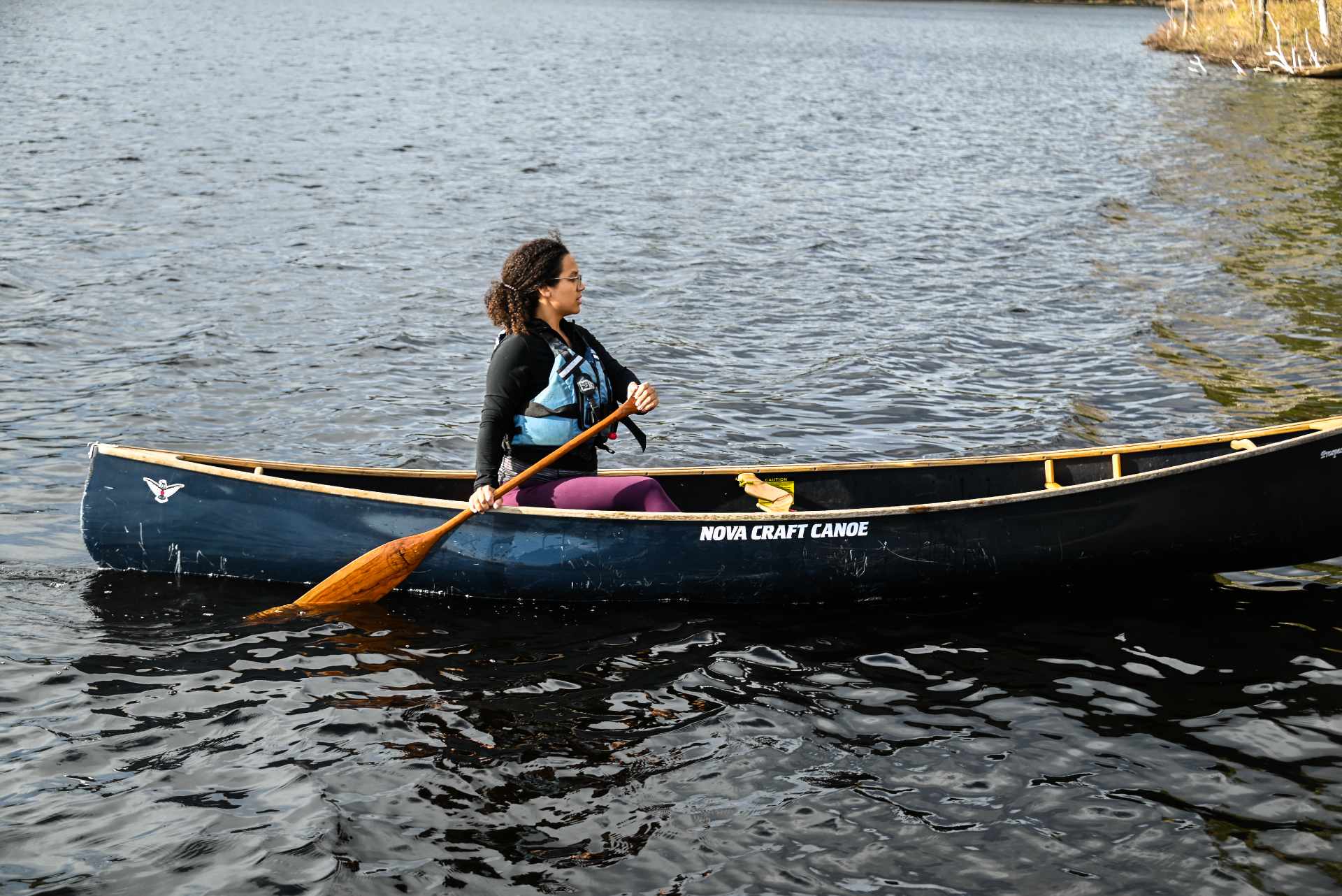I. Understanding Canoeing Strokes

A. Introduction to Canoeing Strokes
Canoeing strokes are specific paddle movements used to maneuver and control the direction of a canoe. Different strokes are employed to achieve specific outcomes, such as propelling the canoe forward, turning, or maintaining stability.
B. Importance of Proper Paddling Techniques
Proper paddling techniques are essential for efficient and effective canoeing. By mastering different strokes and using correct form, paddlers can maximize their power, maintain control, and navigate through various water conditions with ease and precision.
II. Forward Strokes
A. Basic Forward Stroke Technique
- Grip and Hand Placement
Hold the paddle with both hands, slightly wider than shoulder-width apart. The top hand should be positioned above the shoulder, while the bottom hand should be lower, near the hip. Maintain a loose grip to allow for fluid movement.
- Power Phase and Recovery Phase
During the power phase, reach forward with the blade and fully immerse it in the water. Pull the paddle back alongside the canoe, using the larger muscles of the upper body to generate power. The recovery phase involves lifting the paddle out of the water and returning it to the starting position.
B. J-Stroke Technique
- Purpose and Execution
The J-stroke allows paddlers to maintain a straight course by counteracting the natural tendency of the canoe to turn toward the side of the paddler. After the power phase, twist the wrist inward to turn the paddle blade outward, forming a “J” shape in the water. This subtle correction helps keep the canoe on track.
- Correcting the Natural Drift of the Canoe
By using the J-stroke, paddlers can maintain a straight path without constantly switching sides. The slight correction at the end of the stroke helps counterbalance the natural drift and keeps the canoe on course.
III. Turning and Steering Strokes
A. Sweep Stroke
- Initiating a Turn with the Bow or Stern
The sweep stroke is used to initiate turns by applying a wide arc with the paddle blade. To turn the canoe using the bow, start the stroke near the front of the canoe and sweep the paddle blade in a wide arc away from the canoe. To turn using the stern, start the stroke near the back of the canoe and sweep the paddle blade in a wide arc toward the canoe.
- Controlling the Direction and Angle of Turn
The angle and intensity of the sweep stroke determine the direction and degree of the turn. A longer, more pronounced sweep will create a sharper turn, while a shorter sweep will produce a more subtle change in direction.
B. Draw Stroke
- Moving the Canoe Sideways
The draw stroke is used to move the canoe sideways, either toward or away from the paddler. Place the paddle blade in the water perpendicular to the side of the canoe, and pull it toward or away from the hull. This stroke is effective for maneuvering around obstacles or docking.
- Utilizing the Draw Stroke for Maneuvering
By mastering the draw stroke, paddlers can effectively navigate through tight spaces, make precise adjustments to the canoe’s position, or maintain a stationary position against currents or wind.
IV. Bracing Strokes
A. Low Brace
- Maintaining Stability and Balance
The low brace is used to maintain stability and balance, particularly in rough water or when encountering waves. Place the paddle blade flat on the water’s surface and apply downward pressure to counteract instability or prevent capsizing.
- Correcting for Tipping or Capsizing
The low brace is essential for correcting the canoe’s balance and preventing tipping. By keeping the paddle blade flat on the water, paddlers can regain stability and maintain control.
B. High Brace
- Recovering from Instability or Waves
The high brace is used to recover from instability, waves, or sudden shifts in the canoe’s balance. Extend the arm and place the paddle blade flat on the water’s surface, applying upward pressure to regain stability and prevent capsizing.
- Preventing Capsizing in Rough Water
The high brace is essential in rough water conditions to maintain balance and prevent capsizing. By using the high brace, paddlers can stabilize the canoe and prevent it from tipping over.
V. Reverse Strokes
A. Reverse Stroke Technique
- Paddling in Reverse for Precision and Control
The reverse stroke is used for paddling in the opposite direction, providing precision and control. The technique is similar to the forward stroke, with the paddle blade entering the water behind the paddler and pulling back toward the front of the canoe.
- Hand Placement and Power Generation
Maintain the same hand placement as in the forward stroke, with the top hand higher and the bottom hand lower.
B. Pry Stroke
- Moving Sideways or Away from Obstacles
Position the paddle blade perpendicular to the canoe’s side, and push away from the hull to create lateral movement.
- Using the Pry Stroke for Turning or Positioning
By mastering the pry stroke, paddlers can maneuver the canoe in tight spaces or adjust its position. This stroke is particularly useful for turning or maintaining a specific angle to the current or wind.
In conclusion, mastering canoeing strokes is essential for efficient and enjoyable paddling. Understanding and practicing various strokes such as forward, turning, bracing, reverse, and combination strokes can significantly enhance your canoeing experience. Whether you’re exploring calm lakes or navigating through challenging whitewater, honing your paddling techniques will provide better control, maneuverability, and safety. So, grab your paddle, practice these strokes, and embark on memorable canoeing adventures with confidence and skill.
